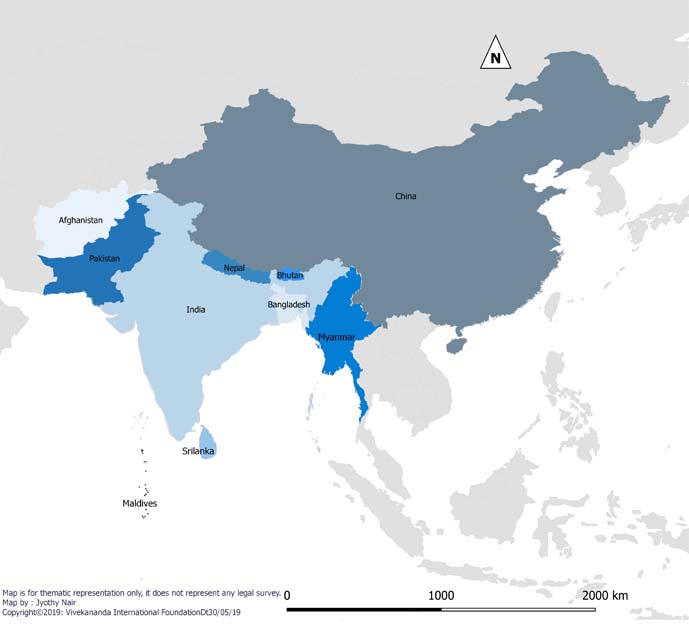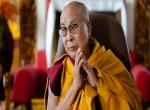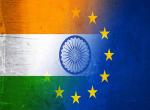Bangladesh
Upon winning the general election held in December 2018, Prime Minister Sheikh Hasina was sworn into office on January 3. This marked the beginning of her third consecutive term following the electoral victories of 2009 and 2014. Notably, her ruling coalition returned to power with a brute majority -- having secured 288 of the 300 parliamentary seats. This result was not entirely surprising given the continued decline of Bangladesh’s political opposition. The country’s main opposition Bangladesh Nationalist Party was effectively rudderless while the Jatiyo Oikyo Front failed to put up any serious challenger to face the prime minister.
On May 10, a boat carrying migrants from Libya to Italy capsized in the Mediterranean. Of the 51 Bangladeshis on board, 37 drowned; bringing back painful memories of a similar tragedy in February. In the following weeks, as survivors returned home to an uncertain future, their tragedy sparked a nation-wide conversation on migration--an issue that resonates deeply in the country where remittances from Bangladeshis working abroad make for the second-largest contributor to the country’s foreign exchange reserves.
On July 15, former president General HM Ershad passed away, marking the end of an era in Bangladeshi politics. A military strongman, Ershad grabbed power in 1982 in a bloodless coup and ruled for nine years. In 1990, he was forced to step down in the face of popular protests, but continued to be active in politics till the end of his life.
In September, the government launched an anti-corruption drive, focussing specifically on illegal casinos. Nearly a 275 people were arrested including several youth leaders and activists, and even local politicians, from the leading party.
In early October, the Prime Minister visited Delhi on a four-day official tour. The issue of river water sharing between the two countries received much attention, as did a bilateral agreement that would India to set up a surveillance system along Bangladesh’s coast.
On November 27, seven of the eight accused in the 2016 Holey Artisan Bakery terror case were convicted and sentenced to death. The verdict was welcomed across the country where the memory of the ghastly attack that claimed 23 lives is still raw; and the conversation about Islamist radicalisation far from over.
Sri Lanka
On April 21, Easter Sunday, local Islamist terrorists launched a series of coordinated attacks across the country, mostly targeting Christian worshippers in churches and Western tourists in luxury hotel. Specifically, the bombings were carried out in three churches in Colombo, Negombo, and Batticaloa, and at three hotels in the national capital. There were also smaller explosions in Dehiwala and Dematagoda. As many as 259 people were killed in the attacks including 45 foreign citizens, while hundreds more were injured. The Islamic State terror group took credit for the attack which, however, would not have been possible without local groups. In fact, in a follow-up incident, in April, local militants clashed with Sri Lankan security forces in a terror safe-house, in the town of Sainthamaruthu. Eventually, the militants blew themselves up, killing family members, including children. The government and security services were severely criticized for becoming complacent and allowing for intelligence failures. The attacks also had a debilitating impact on the tourism industry, the mainstay of the Sri Lankan economy.
In the aftermath of the Easter Sunday attacks, which saw Islamist terrorists target churches and tourists, anti-Muslim sentiment was on the rise in the country. In May, this sentiment erupted in riots, starting in Chilaw and then spreading across the Northwestern province. Muslim properties and businesses were targeted by rampaging mobs, and civilians were killed, even as security forces recovered weapons and other suspicious items across the country. To further complicate matters, a Muslim parliamentarian came under scrutiny for his links to the terror mastermind; eventually, in June, all of Sri Lanka’s Muslim parliamentarians resigned from their positions--ostensibly to allow for an impartial investigation into the attacks.
On November 16, presidential elections were held in Sri Lanka. Incumbent Maithripala Sirisena did not contest the election, with his term have been marred by the horrific Easter Sunday attacks and a bungled attempt to remove his prime minister from office the previous year. Instead, the fight was between former defence secretary Gotabaya Rajapaksa, who was widely credited for winning the war against the LTTE, and Sajith Premadasa. Having campaigned on a national security platform, Rajapaksa won with more than 52% of the votes; while Premadasa secured about 42%, mostly in the Tamil-dominant north and along the eastern coast. Upon taking office, Rajapaksa appointed his brother, the former president Mahinda Rajapaksa, to the office of prime minister.
Pakistan
On February 26, in the aftermath of the terror attack in Pulwama, India conducted airstrikes across the Line of Control, targeting terror camps in Balakot in Pakistan-occupied Kashmir. This was the first time since 1971 that Indian warplanes had crossed the Line of Control. The Pakistani Air Force launched a retaliatory airstrike the next day in which one Indian jet was shot down and its pilot taken hostage -- and later returned. The airstrikes upended conventional wisdom about risk management and conflict escalation in the subcontinent, but also sent bilateral ties which were already going downhill, into a freefall.
Pakistan’s ties with India worsened further after India abrogated Article 370 and changed the status of Kashmir, on August 5. This evidently came as a rude shock to the government in Islamabad even though the intentions of the ruling party in Delhi in this regard were clearly spelt out in its election manifesto. Pakistan protested loudly--it downgraded its relations with India, suspended trade and travel between the two countries, and also sought to mobilise international opinion against India. However, its efforts bore few fruits. The only positive development in this context was the opening of the Kartarpur corridor in November, and Pakistan’s offer of visa-free travel to Indian Sikhs wanting to pray at one of their holiest sites.
During the course of the year, Prime Minister Imran Khan also made two official state visits to China, where he met with President Xi Jinping and Premier Li Keqiang among others -- mostly to attract more Chinese investments. Pakistan is already one of the biggest recipients of Xi’s ambitious Belt and Road Initiative in recent years, with Chinese investments in huge infrastructure projects in the country. However, these projects are not without controversy and, more worryingly for Khan, Chinese FDI has in fact fallen dramatically in the past fiscal year.
Khan also travelled to Washington, DC. where he met with US president Donald Trump at the White House in July. Overall, the visit was considered a success from the Pakistani point of view. The two leaders had previously been at loggerheads, and the visit allowed for some sort of rapprochement. This was mutually beneficial -- with the US, at that time, seeking to enlist greater Pakistani cooperation for its talks with the Taliban in Afghanistan; while Pakistan was desperately looking for a lifeline to pull itself out of its isolated position on the world stage. The cherry on the cake, for Khan at least, was President Trump’s offer to mediate in Kashmir.
Throughout the year, the Pakistan also struggled with its adversarial listing by the Financial Action Task Force, the inter-governmental body that monitors money laundering, terrorist financing and similar problems that threaten the integrity of the international financial system. The FATF had placed Pakistan on its Grey List in 2018, and given it certain benchmarks to meet by October 2019 or else risk being blacklisted alongside Iran and North Korea. By the end of the year, Pakistan had managed to avoid the Black List but couldn’t get off the Grey List either.
2019 closed on a particularly controversial note for the Pakistani military--with two major developments. First, former president and army chief Pervez Musharraf was found guilty of high treason and sentenced to death by the Islamabad High Court. His case is still being heard, but irrespective of how it unravels in 2020, the conviction in itself was hugely significant, and a first in the history of Pakistan. Second, incumbent Army chief General Bajwa Qamar Javed Bajwa’s term was extended by three years and this decision by the government ran into some major legal hurdles. For the time being, Pakistan’s top court has given the government and Gen Bajwa a temporary lifeline, but the issue remains far from being resolved.
Nepal
One of the biggest headline-grabbing events in Nepal in 2019 was undoubtedly the visit of Chinese President Xi Jinping in October. This was the first time in more than two decades that the Chinese president was visiting Kathmandu and, as is only to be expected, Nepal pulled all the stops for the visit. The two countries signed several agreements during the visit, mostly relating to transport connectivity and greater Chinese investment in Nepal. The latter brought forth certain complications, as the public noted that not all past promises of investment had borne fruit. Another bone of contention was an extradition treaty that China wanted Nepal (home to thousands of Tibetan refugees) to sign, but Kathmandu resisted--in part due to domestic public opinion and in part due to US pressure.
Indeed, Nepal spent much of 2019 continuing to balance itself between the competing interests of the US and China. In June, the US government unveiled its Indo-Pacific Strategy which was received much attention in Kathmandu given that Nepal was expected to play an important role in this strategy. However, the US’s IPS was of course pitted against China’s Belt and Road Initiative--and it seems like the scales tilted in favour of the latter.
With India, Nepal’s relations were largely on the positive side through 2019. External Affairs Minister S. Jaishankar visited Kathmandu in August; the two countries inaugurated a major petroleum pipeline in September. And they also laid the foundation stone for a long-pending bilateral hydropower project. However, there was one controversy that emerged on the negative side -- India’s inclusion of the Kalapani region in its latest official political map sparked protests in Nepal which claims the region as its own. As such, the issue didn’t seem to get much attention in Delhi but, in Kathmandu, this was a big talking point.










Post new comment